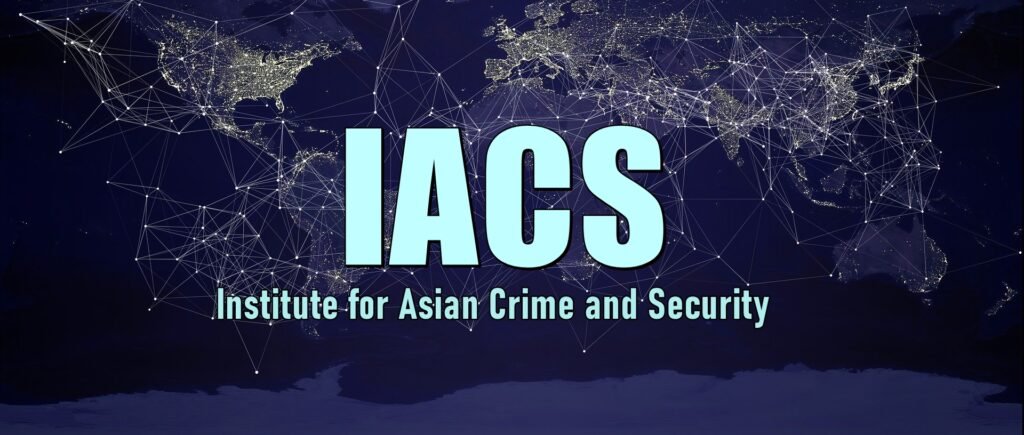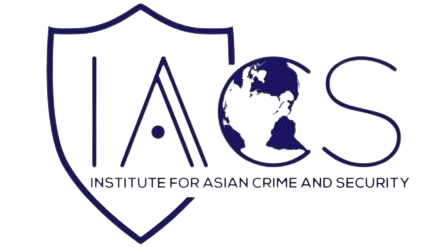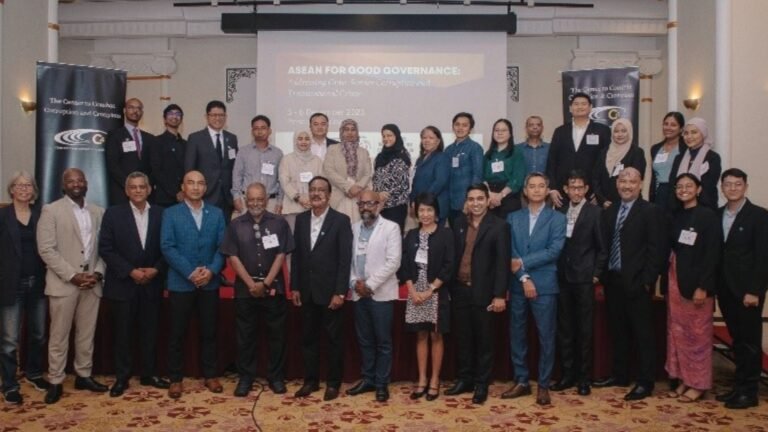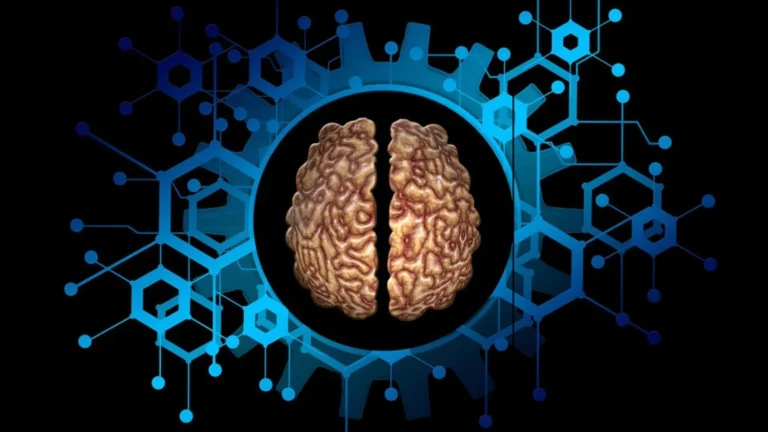Post Truth Politics (PTP), censorship, manipulation, and control are impediments to the exercise of free speech, thought and expression in the political arena.
Part of the problem with researching a topic such as media bias in the modern political landscape is the fact that we ourselves are frequently exposed to bias through the research we are conducting. Additionally, in the current climate of political correctness, there is a well-founded reticence to publish anything that questions certain established guidelines. Objectivity, however, is, or at least is supposed to be, the keystone of any academic research endeavor. This goal has become increasingly difficult in the current conflictual, post-truth environment, where fact and opinion freely intermingle, and where it becomes increasingly difficult to discern the difference between them. In this article, we will introduce sources of national and international information consumption. We shall also briefly examine post-truth politics, media manipulation, and the consequences such distortion exercises upon free speech and thought.
It must be emphasized that free speech is not without boundaries or limitations. Cliteur and Herrenberg clearly underscored this in their writing. “The freedom to criticize is a fundamental institution of liberal democracies. That freedom is not absolute though, and there are good reasons to accept limits to the freedom of speech, for example in the case of incitement to violence. Khomeini’s fatwa [calling for the death of the journalist Salman Rushdie. My note] itself, for instance, can never find protection under a liberal principle of freedom of speech.”[1] Still, it must be clearly emphasized that the stifling of free speech in democratic discourse, be it left or right, is unethical and antithetical to good governance.
Today the media, due to its wider, stronger, and more influential reach, has become a force to be reckoned with and has solidified its position as the so-called 4th pillar or 4th estate of “democracy.” Local, national, regional, and international reporting through media now touch upon every aspect of human existence from natural disasters to wars, and from terrorism and crime to public health and safety. As Afrin cogently underscores, “In the postmodern world, the media have become an inseparable part of everyday life, where there is hardly any scope to spend a single moment without the screen and media.”[2] Global governance, economics, knowledge, technology, and power are all advanced through selective messaging, clever advertising, and complex algorithms. Such institutions are therefore impacted, in one way or another, through media manipulation and representation. Fortunately, the seemingly invincible foundations of the media have recently been shaken to their core due to public disenchantment. A perfect example was witnessed in the historically low ratings at CNN, which plummeted by 80% at the outset of 2022.[3]
Let us begin our own personal journey down the confusing ‘rabbit hole’ of post-truth distortion by examining the definition of post-truth politics (PTP) and the difference between various related concepts. While the term “post-truth’ is recent, historically speaking, there tends to be abundant disagreement as to the origins of the concept itself. Writers such as Biswajit Ghosh trace it as far back as Plato, who was an ardent advocate of absolute truth (i.e. empirical truth versus relative truth of the sophists).[4] It is the Serbian American playwright Steve Tesich who is actually credited, by the Oxford Dictionary, with the first use of the term, in 1992.
Post-truth
The Cambridge dictionary defines post-truth as: “relating to a situation in which people are more likely to accept an argument based on their emotions and beliefs, rather than one based on fact.”[5] We might consider post-truth as a rejection of reality, or the acceptance of an alternative reality – one fit for purpose. More than ever politics have taken on a post-truth reality, which is projecting a truth that is most palatable to the general public and influenced and massaged by political decision-makers. Additionally, we are also living in a politically motivated post-truth technocracy. Post-truth did not magically appear overnight. It is more an evolutionary process of combined factors. These include enhanced technological prowess and reach, digitalization, globalization, materialistic consumerism, and individualism, to mention but several of its core features. In support of such a position Hyvönen insightfully argues, “I propose we approach post-truth as a crystallization of a longer trajectory of devaluing truth in political discussion,”[6] thus emphasizing the intimate relationship between post-truth and politics.
Po犀利士
st-modernism
In many ways post-truth is a reflective alter-ego of what is termed “post-modernism.” Post-modernism is strongly reflected in current literature, music, film, and architecture, but it also runs much deeper. Post-modernism reflects the rejection of the empirically based modern era, which began with the thinking of René Descartes, the French philosopher, sometime around 1630.[7]
Modernism was the scientific and evidence-based reasoning first perpetuated during the period of the enlightenment. Post modernism is defined by Encyclopedia Britannica as: “… [a] late 20th-century movement characterized by broad skepticism, subjectivism, or relativism; a general suspicion of reason; and an acute sensitivity to the role of ideology in asserting and maintaining political and economic power.”[8] The problem with post-modernism and, by extension, post-truth, is the fact that, almost anything can be taken as truth. Convincing arguments can be made for both sides of any debate since, there is at times a lack of empirical fact and an abundance of subjectivity involved.
This strategy of swaying and controlling public thought and opinion through the use of “pathos” (emotional -based) rhetoric has frequently been employed by tyrants and dictators to efface the existence of “logos” (logic-based) rationality. Post-truth cannot, however, stand on its own shaky foundations and requires a concurrent manipulation of the public education systems.[9] Part of this post-truth framework also requires that future representatives of media and government also adopt and support the agenda. Ghosh insightfully underscores four aspects that have contributed significantly to the perpetuation of a culture of falsification and untruth, such as advanced in post-truth society. These include:
(a) rising exclusion and inequality under a neo-liberal economy,
(b) digitalization and expansion of electronic media,
(c) populist politics of an imagined community, and
(d) rise of individualism.
It must be noted, unfortunately, that while Ghosh makes pertinent observations, he also loses any and all sense of objectivity falling into the trap of subjective bias himself at the end of his research. He does this by selectively demonizing certain conservative world leaders who do not meet his selective image of “truth.” Thus, while denouncing post-truth, he himself becomes a victim of its influence.
When speaking about the selective representation of a strategic narrative, it is important to distinguish between three terms: misinformation, disinformation, and propaganda. The first, misinformation, is any information that is false and that is spread. There is no specific intent, and it is spread unwittingly, most often by error, misunderstanding, or simple oversight. Disinformation, on the other hand, is the deliberate weaponizing or instrumentalization of misinformation, in order to achieve a specific goal or agenda. Intent plays a leading role in the dissemination of disinformation. Propaganda is information which is used to discredit, or cast doubt upon a person, group, or organization. It is a tool frequently employed by governments or other power-based structures.
Pandemics, War, and the Death of Free Speech
Post-truth has become the homophilic sword and shield of both the left and right and divides the political spectrum. Anyone who argues differently has an agenda to push, i.e. an axe to grind. The fault line created in the center (the place dedicated to open discourse) has continued to expand thereby polarizing both ends of an increasingly contentious polity. Any objective analysis will, however, clearly demonstrate that it is the politically radical that have fiercely adopted post-truth, whether considered justified or not, in an attempt to silence the voices of discontent and political disenfranchisement. We have witnessed clear examples of such strategy during the Covid-19 pandemic, for instance.
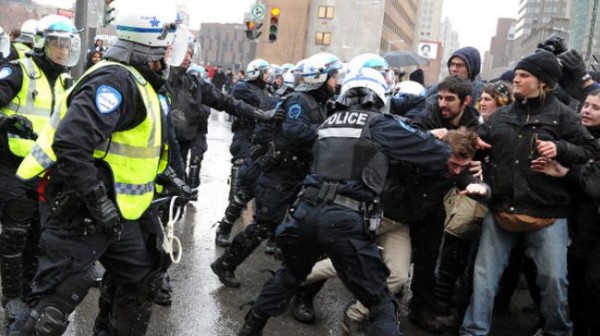
Source: https://www.pressenza.com/it/2013/03/240-arresti-in-canada-in-un-raduno-contro-la-brutalita-della-polizia-2/
Canadian Prime minister Trudeau’s invocation of Canada’s War Measures Act, or what was ostensibly martial law, against the trucker’s strike, coupled with the freezing of the personal financial assets of those who supported said movement is but one glaring example of the politically left engaging in post-truth. In fact, a search for images relating to the imposition of martial law in conjunction with the 2022 trucker strike will return extremely limited and parsed results.
In a spectacular feat of executive overreach, the Department of Homeland Security secretary, Alejandro Mayorkas, informed Congress, without seeking either their approval or consent, that his agency would be creating a “Disinformation Governance Board” whose function would be to combat “misinformation” coming from Russia as the midterm elections were drawing near. The Biden administration’s new entity calls to mind the Committee on Public Information (CPI) or the Creel Committee, which was created to mobilize public opinion in favor of support for WWI. This new “Ministry of Truth,” as it has been dubbed by critics, would have been led by Nina Jankowicz, “a disinformation fellow” formerly of the Woodrow Wilson think tank. Quite ironically, it is the politically right that has been targeted as exclusively instrumentalizing post-truth narratives to their own advantage. Thus, once again we remark that truth is entirely relative in a postmodernist technocracy.
The media, both analog and digital, and social media in particular, have also played leading roles in the suppression of free speech and the exchange of ideas during the Covid-19 pandemic. In the case of social media, direct censorship and selective representation of the ‘truth’ have been instrumentalized. On the one hand, they enforced and expanded government mandates geared at repressing free speech through highly selective censorship, while on the other they promoted the official version of the truth through selective discourse and imagery amplification, which resulted in social manipulation of public opinion. This practice strongly resembles the strategic censorship approach exploited by the Chinese regime. Margaret Roberts used the acronym of three ‘F’s’ to describe this particular strategy. The three ‘F’s’ of censorship – fear (deterring any sort of criticism), friction (making it more difficult to gain access to information), and flooding (information overflow).[10]

Source: https://www.indigne-du-canape.com/nsa-si-big-brother-est-ton-ami-clique-sur-jaime/
Krešimir Pavelić in a strongly worded rebuke, condemned such tactics as examples of “perhaps greatest dangers that occurred to the media …….the so called journalism of the Faktograf type. Under the guise of scientific scrutiny, medically undereducated journalists give themselves the right to comment and present the ‘universal truth’ in public, almost always referring to selected scientific facts without the whole information context.”[11] Leber and Abrahams stress “social media platforms like Facebook and Twitter were heralded circa 2009–2011 as ‘liberation technology’ that would facilitate mass mobilization against Middle Eastern authoritarian regimes of the Middle East and North Africa (MENA).”[12] The authors further emphasize the point that such technology also offered scope for ruling political parties or authoritarian regimes to both quash counter-narratives, while swaying and manipulating public opinion in their favor. “[W]e find considerable suggestive evidence that dedicated institutions within ruling regimes can generate or drown out specific online strategic narratives – particularly through the mass deployment of automated, inauthentic accounts (‘bots’), and the outsized influence of certain authentic, pro-regime ‘influencer’ accounts.”[13] In addition to these more obvious measures, more nuanced and insidious approaches have been, and, indeed, continue to be exercised.
It would only be fair to ask why media and social media would in particular resort to such tactics. The answer is quite obvious and that is they derive political support, direct funding, and investments for sticking to the official line and recounting the correct narrative. In support of this view, Gehlbach and Sonin (2009) underscore two common strategies of media control, those of which consist of bribery and government takeover. One of the downsides of such a strategy has been reflected in the distinct lack of confidence that the public currently hold in their perception of the media. On a more positive note, such practices have also contributed to a rise to alternative media sources. Government and political pressure are also sources of forced compliance. A new law was passed in Singapore, which imposes jail time and fines for internet publishers who fail to correct ‘online falsehoods’ which threaten to pose harm to the public interest. Be it the Singaporean example or that of the Biden Administration’s Disinformation Governance Board, such institutions sadly presage the possibilities of chilling opportunities of free speech, honest and open academic research, and extending an already powerful government overreach.
There have been many occasions when academics who have failed to adhere to or those who have questioned the official line have not been published, have been publicly ostracized by their peers and by their own institutions, the so-called bastions of free speech. In some of the worst cases, academics and researchers have lost their careers entirely. Such a culling of the intelligentsia has not been seen since the purges of the cultural revolution in China or those conducted by Stalin in Russia. Similar tactics are currently being employed by Google and other big tech outlets concerning the conflict between Russia and Ukraine. In one fell swoop, human rights have died their own death without even an opportunity to heave a final sigh.
Conclusion
Like so many social dilemmas, as unpalatable as it is, there is no silver bullet solution to the safeguarding of free speech and the exercise of political freedom. The more technology encroaches into the personal sphere, the more such freedoms will be sacrificed on the altar of technocracy and post-truth. This being said, there are ways to slow down and, in some cases, divert such influence. It should, however, be noted as Cheah eloquently puts it, that “(i)n countries where the government controls the press, the need for unbiased information drives citizens to seek alternative news sources.”[14] Herein lies the glimmer of a hope which Cheah further expands upon; “(a)s communication technology continues to improve, the notion that government can control or manipulate all information outlets becomes more unrealistic.”[15]Self-directed research represents a strong countermeasure to force-fed narratives and indoctrination. Sadly, it is only a minority of individuals who will invest the required effort to seek out the truth, while others are content to believe what is presented for their consumption. Another more radical and more difficult solution to digest is to disconnect entirely from social media and such sources of subtle mind control. Barring such measures, a reasoned evaluation and critical open-minded debate concerning topics being outlined presents a viable alternative to merely accepting the consensus view. Such a strategy reflects the advice attributed to the famous Greek dramaturgist Euripides: “(q)uestion everything, learn something, answer nothing.” In his writing Ghosh, for instance, argue that the best method of combatting post-truth manipulation is through the application of human subjectivity and reliance upon alternative media sources in developing an unbiased perspective.[16] There is also the possibility of the so-called ‘Streisand effect’ occurring as a result of excessive censorship.
The ‘Streisand effect’ is a response to censorship to hide or prevent the discovery of information. What frequently occurs is precisely the opposite, whereby individuals seek out the truth in a quest to satisfy the natural curiosity of human nature. The effect was named after the singer and actress Barbara Streisand, since she attempted to suppress images of her Malibu home in California. The affect was enhanced attention to the specific photograph in question. This was precisely the case, in 2020, when the New York Post published emails from Hunter Biden’s laptop. Twitter blocked the story and locked out the accounts of anyone sharing it. A clear example of Big-Tech manipulation and the policing of free speech. It is free speech and the absence of censorship that should result in the identification of the truth.
References
Afrin, S. (2021) A Postmodern Cultural Study of Media Manipulation and Capital Market Expansion. Postmodernism Problems. [Online] 11 (3), 270–289.
Bei Qin et al. (2018) Media Bias in China. The American economic review. [Online] 108 (9), 2442–2476.
Anon (2022) The morning after. The Business Mirror. 2022
Carrasco-Farré Carlos (2022) The fingerprints of misinformation: how deceptive content differs from reliable sources in terms of cognitive effort and appeal to emotions. Humanities & social sciences communications. [Online] 9 (1).
Cheah, H. F. (2016) Does foreign media entry discipline or provoke local media bias? Foreign media entry and local media bias. International journal of economic theory. [Online] 12 (4), 335–359.
Cliteur, P. & Herrenberg, T. eds., 2016. The Fall and Rise of Blesphemy Law. 1st ed. Leiden: Leiden University Press.
DellaVigna, S. & Kaplan, E. (2007) The Fox News Effect: Media Bias and Voting. The Quarterly journal of economics. [Online] 122 (3), 1187–1234.
Dietrich, N. & Eck, K. (2020) Known unknowns: media bias in the reporting of political violence. International interactions. [Online] 46 (6), 1043–1060.
Dwyer, T. (2019) Special Issue: Media Manipulation, Fake News, and Misinformation in the Asia-Pacific Region. Journal of Contemporary Eastern Asia. 18 (2), 9–15.
E, Q. et al. (2021) Mapping the field of misinformation correction and its effects: A review of four decades of research. Social Science Information. [Online] 60 (4), 522–547.
Ghosh, B. (2022) Politics of Manufacturing Consent in a Post-Truth Society. Journal of developing societies. [Online] 38 (1), 7–26.
Giusti, S. & Piras, E. (2020) Democracy and fake news: information manipulation and post-truth politics. Routledge.
Han, R. et al. (2022) How Media Exposure, Media Trust, and Media Bias Perception Influence Public Evaluation of COVID-19 Pandemic in International Metropolises. International journal of environmental research and public health. [Online] 19 (7), 3942–3956.
Krešimir Pavelić (2021) Today’s Media: Problems and Manipulations. In Medias Res. [Online] 10 (19), 2959–2968.
Leber, A. & Abrahams, A. (2019) A Storm of Tweets: Social Media Manipulation During the Gulf Crisis. Review of Middle East studies (Tucson, Ariz.). [Online] 53 (2), 241–411.
Moeller, S. D. (2006) ‘Regarding the Pain of Others’: Media, bias and the coverage of international disasters. Journal of international affairs (New York). 59 (2), 173–196.
Woolley, K. & Sharif, M. A. (2022) Down a Rabbit Hole: How Prior Media Consumption Shapes Subsequent Media Consumption. Journal of Marketing Research (JMR). [Online] 59 (3), 453–472.
[1] Cliteur, P. & Herrenberg, T. eds., 2016. The Fall and Rise of Blesphemy Law. 1st ed. Leiden: Leiden University Press.
[2] Afrin, S. (2021) A Postmodern Cultural Study of Media Manipulation and Capital Market Expansion. Postmodernism Problems. [Online] 11 (3)., p. 271.
犀利士
ef3″ name=”_ftn3″>[3] Schorr, I., 2022. CNN Ratings Plummet 80 Percent to Start 2022. [Online]
Available at: https://news.yahoo.com/cnn-ratings-plummet-80-percent-175338698.html [Accessed 13 May 2022].
[4] Ghosh, B. (2022) Politics of Manufacturing Consent in a Post-Truth Society. Journal of developing societies. [Online] 38 (1), p. 8.
[5] N.A., 2022. Post-truth. [Online] Available at: https://dictionary.cambridge.org/dictionary/english/post-truth
[Accessed 13 May 2022].
[6] Hyvönen, A.-E., 2018. Defining Post-truth: Structures, Agents, and Styles. [Online] Available at: https://www.e-ir.info/pdf/76125 [Accessed 13 May 2022].
[7] Jurczak, P., 2019. What is Postmodernism?. In: Introduction to Philosophy. Lansing: University of florida, p. 258.
[8] Duignan, B. “Postmodernism.” Encyclopedia Britannica. https://www.britannica.com/topic/postmodernism-philosophy. Accessed 13 May 2022.
[9] Ghosh, B. (2022) Politics of Manufacturing Consent in a Post-Truth Society. Journal of developing societies. [Online] 38 (1), p. 8.
[10] Roberts, M.E., 2020. Censored: Distraction and Diversion Inside China’s Great Firewall. Reprint ed. Princeton: Princeton University Press.
[11] Pavelić:, K., 2020. Today’s Media: Problems and Manipulations. Zagreb, Centre for Media Philosophy and Research.
[12] Leber, A. & Abrahams, A., 2019. A Storm of Tweets: Social Media Manipulation During the Gulf Crisis. Review of Middle East Studies, 53(2), p 242.
[13] Ibid., p. 243.
[14] Cheah, H. F. (2016) Does foreign media entry discipline or provoke local media bias? Foreign media entry and local media bias. International journal of economic theory. [Online] 12 (4), p. 335.
[15] Ibid.
[16] Ghosh, B. (2022) Politics of Manufacturing Consent in a Post-Truth Society. Journal of developing societies. [Online] 38 (1), p. 9.
Images Credit:
- Featured Image: https://www.armidaleexpress.com.au/story/6408284/shuffling-reality-in-a-post-truth-society/
- Orwell 1984: This Photo by Unknown Author is licensed under CC BY-SA-NC
About the Author: Dr. James P. Welch is a senior researcher at IACS. He holds a Ph.D. in international criminal law from Leiden University.
